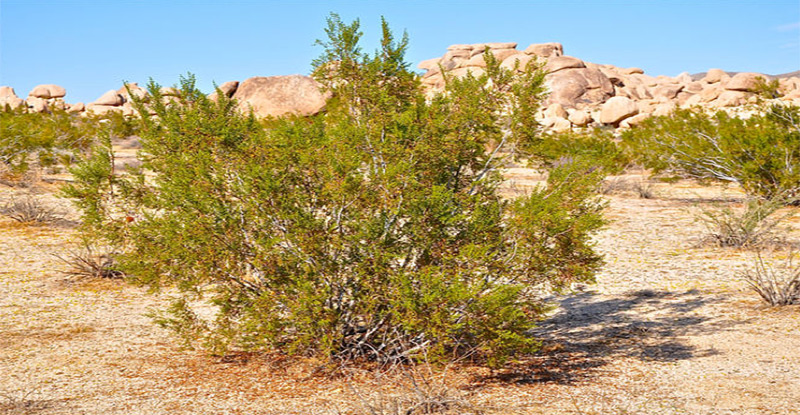Learn
Homeowners when deciding on what to landscape with can make good ecological decisions by looking around at what grows naturally in the area. For many, cactus comes to mind, but there are many other native plants that would do well in your yard. Consider the creosote plant (Larrea tridentate), which can increase pollinators, as well as be a nurse plant for native cacti. Creosote offers many advantages to the environmentally conscious homeowner. Creosote, also known commonly as chapparal, is native to the Southwest and grows at altitudes of 5,000 feet and below. It is found in the well drained slopes of the Sonoran, Mohave, Chihuahuan deserts as well as the Verde Valley. This low water, native plant that can to be several centuries old, and thrives in wet periods and times of drought. This normally grows to be about 4 feet high, but can get as tall as 12 feet. Its small, waxy leaves leaves are a quarter to a half inch long. In dry times the leaves will fold in half to limit exposure to the sun. In times of extreme drought it will drop some leaves. When wet, rain will volatize the leaves’ oils, producing a unique, camphor-like odor that many associate with the scent of “desert rain.” Creosote flowers are small and yellow, and ripen into rounded seeds that are coated in a fine white fuzz. It reproduces via seeds and root cloning: old branches will die off and fall to the ground, while new branches continue to grow from the historic roots of the plant. Seeds are genetic clones of the original parent plant, so most often creosote bushes that are located in a local cluster are all genetically related. Due to its unique genetic regeneration process, there are some legacy creosotes that have been cabon-dated as more than 11,000 years old. Creosote supports the food web by providing habitat for over 22 bee species that thrive off its yellow flowers, and the leaves serve as well as food for jackrabbits, the only animal known to eat the leaves. The leaves have a bitter taste, yet still have always had medicinal value; Native Americans used this plant to treat a number of illnesses, including fever, influenza, colds, upset stomach, gas, gout, arthritis, sinusitis, anemia, and fungus infections. More information about this attractive low water, low maintenance native plant can be found at the Arizona Cooperative Extension, Yavapai County at: https://cals.arizona.edu/yavapai/anr/hort/byg/archive/creosote.html






